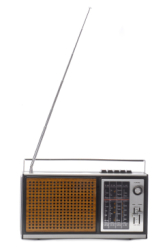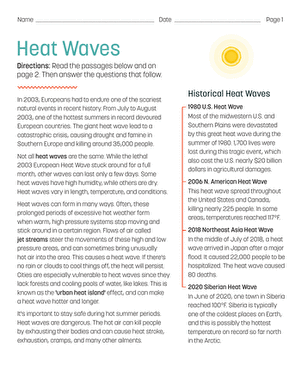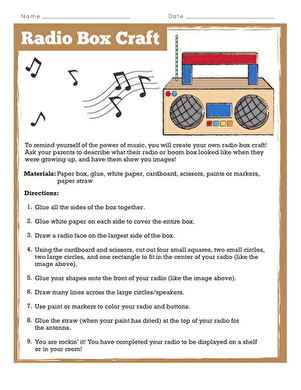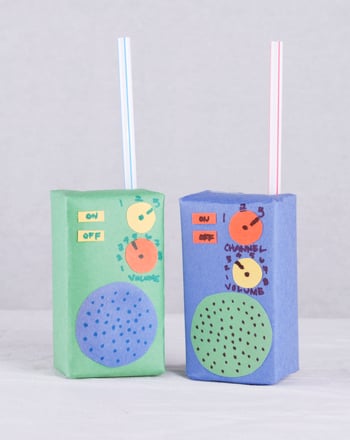Science project
What Materials Block Radio Waves Most Effectively?
Grade Level: 4th - 8th; Type: Physics
Objective
The goal of this experiment is to learn about radio waves. As they learn about the multiple sources of these waves and how difficult it is to block them, students will gain an appreciation of the properties of the waves and how ubiquitous they are in every day life.
Research Questions:
- What are radio waves and where do we use them?
- What is a transmitter and what is a receiver?
- How are radio waves measured?
- What types of materials are best at blocking radio waves?
Radio waves are all around us. We use them to operate our televisions, use our telephones, open our garage doors, power our remote controlled toys, and our wireless networks. Astronomers use them in telescopes and doctors use them in surgery. The frequency of a radio wave refers to how many waves exist within a particular unit of time. Frequency is measured in cycles per second – otherwise known as hertz. A simple garage door opener is around 40 megahertz, a cell phone around 824 – 849 megahertz and a deep space monitor between 2,290 to 2,300 megahertz.
Students already know that glass does not block radio waves because garage door openers are operated from inside the car. However, they are usually unfamiliar with the blocking capability of other materials. Blocking radio waves depends upon the size of the wave and the material used to block the wave. It is not intuitively obvious that a transmitter does not necessarily need a line of sight to the receiver because waves can bounce off surfaces and get around them. Instead of being blocked, waves are more commonly slowed down.
Materials:
- Access to a garage whose door opens automatically
- Garage door opener
- Pillow case
- Concrete block
- 1’ thick board measuring 4’ x 4’ (other sizes will also work)
- Big soup pot or old-fashioned metal milk box for the delivery of milk
Experimental Procedure:
- Go outside. Standing several feet from your garage door, double check that your garage door opener works. The garage door opener is a transmitter of radio waves and the door itself is a receiver.
- Start moving away from the garage door. When you are 20-30 feet away, try to open (or shut) the door. Does the opener work as quickly? How far do you have to go before it stops working?
- Head back to your garage. Wrap the transmitter up in a pillowcase. Does the pillow case block the radio waves?
- Try blocking the waves with a 4 x 4 foot board. Does the board block the microwaves? What if you stand back 3 feet and aim the transmitter directly at the board? What happens when you do this standing five or six feet from the board? Is there any difference if you stand even further back?
- Try holding the transmitter inside a large pot, metal milk case or something that completely wraps around the transmitter. Do the radio waves reach the garage door? Is the door more or less responsive?
Variations of this experiment can be performed using radio control toys and timing how fast the toy runs on a smooth surface when the wave is blocked.
Terms/Concepts: Radio waves; Transmitter; Receiver; Frequency; Hertz; Wavelength
References:
Sinclair, Jim. How Radio Signals Work McGraw Hill (1998)
NASA: The Electromagnetic Spectrum
http://science.hq.nasa.gov/kids/imagers/ems/radio.html
Windows to the Universe: Radio Waves
http://www.windows2universe.org/physical_science/magnetism/em_radio_waves.html
Spark Museum: The Discovery of Radio Waves - 1888
Education.com provides the Science Fair Project Ideas for informational purposes only. Education.com does not make any guarantee or representation regarding the Science Fair Project Ideas and is not responsible or liable for any loss or damage, directly or indirectly, caused by your use of such information. By accessing the Science Fair Project Ideas, you waive and renounce any claims against Education.com that arise thereof. In addition, your access to Education.com's website and Science Fair Project Ideas is covered by Education.com's Privacy Policy and site Terms of Use, which include limitations on Education.com's liability.
Warning is hereby given that not all Project Ideas are appropriate for all individuals or in all circumstances. Implementation of any Science Project Idea should be undertaken only in appropriate settings and with appropriate parental or other supervision. Reading and following the safety precautions of all materials used in a project is the sole responsibility of each individual. For further information, consult your state's handbook of Science Safety.












